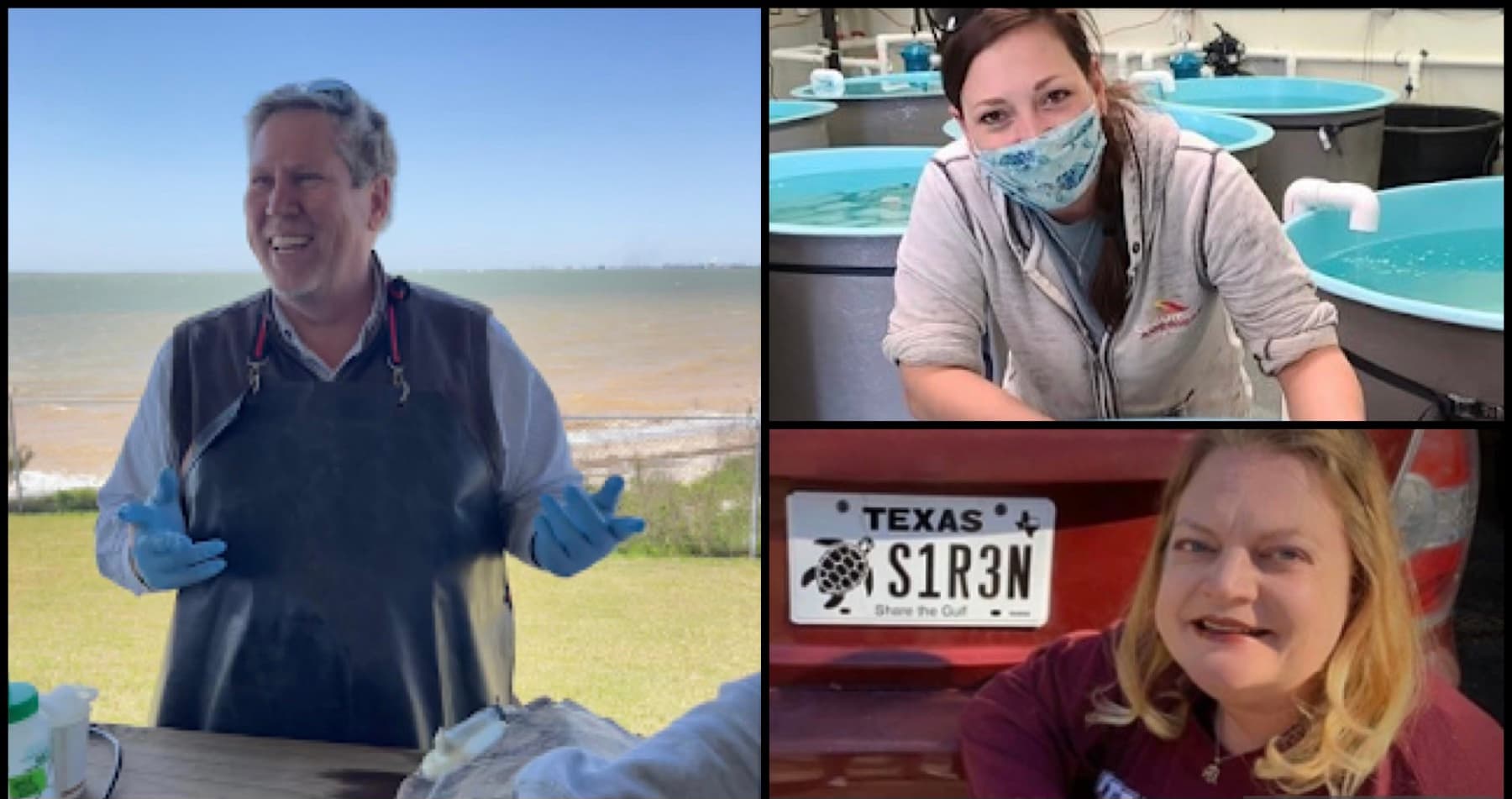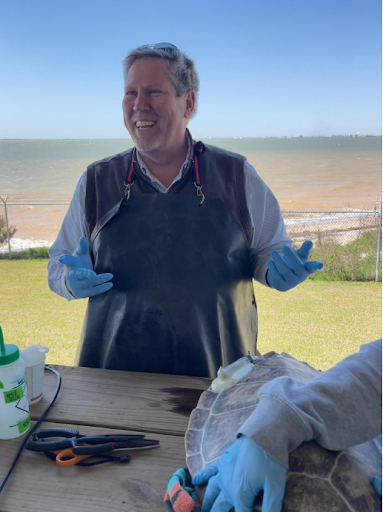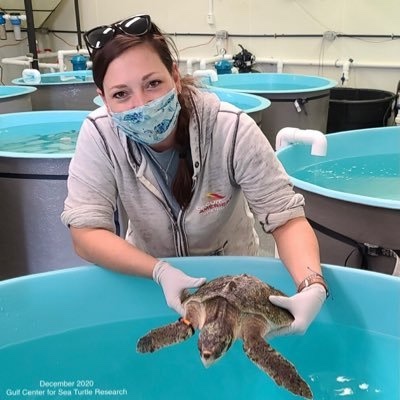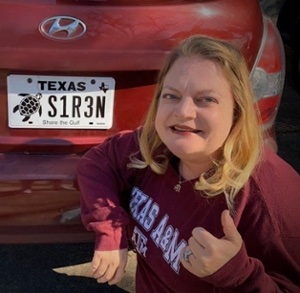Turtle Talk: Get to Know Galveston’s Sea Turtle Heroes
By Caroline Jordon
Tweet
The Gulf Center for Sea Turtle Research (GCSTR) is well known around Galveston for their determination in protecting, conserving, and researching sea turtles around the upper Texas coast. The Nautilus wants to recognize the heart of the GCSTR by introducing both the director and program assistants that created this extraordinary program.
At the beginning of October, the Nautilus sat down for a Zoom call with Dr. Christopher Marshall to discuss his role, career background, program assistants and goals regarding the GCSTR.
Dr. Christopher Marshall

Dr. Christopher Marshall, professor in TAMUG’s marine biology department, and director and founder of TAMUG’s Gulf Center for Sea Turtle Research, is no doubt an advocate for the protection and conservation of the sea turtle species.
Dr. Marshall came up with the idea to start a sea turtle center prior to the start of the Covid-19 pandemic. With the help of a dedicated volunteer team, he turned the unused mariculture facility on the edge of Pelican Island into a functional and successful temporary sea turtle hospital.
Dr. Marshall’s prior research in his early years “did not involve sea turtles but instead marine mammals,” he says, and his scientific training was in “functional morphology and comparative biomechanics.” The center of Dr. Marshall’s research, he explains, revolves around “how animals work and what anatomy and behaviors are involved.”
It was whiskers on a manatee that fascinated Dr. Marshall, leading him to become more interested in how animals feed. This special interest is what “caught my attention to work at Texas A&M-Galveston, given the opportunity to study how sea turtles fed along the Gulf Coast.”
One of his many projects involved determining how hard a loggerhead could bite. As a type of durophagous animal, these turtles have an ability to crush their food. His research proved a whopping “500 pounds of force”. This statistic can be spotted on the new Galveston Island Brewery beer can called the “Loggerhead Lager.”
Dr. Marshall’s most memorable experience while working at GCSTR is the release of a sea turtle named Stubbs. “Stubbs was named after his condition, osteomyelitis, which caused an infection in his arm bones that then led to the amputation of the tips of his flippers,” he explains.
Spending 5 months doing rehabilitation with the GCSTR hospital team, “Stubbs still holds the record for the longest patient in the hospital,” says Dr. Marshall. He beams about how excited the team was to finally be able to release Stubbs back into the wild after months of intensive and specialized care.
Within the next two years, Dr. Marshall plans to upgrade to a new facility for the hospital. This design will include public viewing tanks for 4-6 resident turtles, an outreach center, and public viewing areas to see into the hospital and rehabilitation rooms.
Theresa Morris

Dr. Marshall’s work is not accomplished alone. He requires the help of a team to complete his conservation and research goals.
Theresa Morris is a member of the GCSTR team and one of the program assistants working alongside Dr. Marshall.
Morris is involved in a wide range of programs, including the nesting patrol and hospital management, which include tasks such as rehabilitation, hospital tank maintenance, and patient health and swim-test monitoring.
Morris had a busy but successful nesting season from April 1 to July 15. Overall, there were, Dr. Marshall says, “12 Kemp's Ridley sea turtle nests total, and the eggs were all excavated safely and sent to Padre Island National Seashore for incubation.” Morris helped lead this effort by directing and educating volunteers on how to find and handle sea turtle nests properly.
Kari Howard

Kari Howard is another program assistant for GCSTR who is responsible for “the stranding and salvage network, in addition to volunteer recruitment,” says Dr. Marshall.
Howard and Morris work diligently to save the turtles, but do so in different ways. Howard focuses on various sea turtle programs ranging from necropsy and research to rescue and response. She also brings in the much needed volunteers from both TAMUG or the Texas Master Naturalist group to provide GCSTR with more efficiency and support.
Although the stranding season is ongoing, over the Fall 2022 semester Howard has responded to what Dr. Marshall describes as an “influx of Loggerhead sea turtle strandings along the Texas coast.” There have been over 30 Loggerhead strandings within the past few months, and Howard has been helping scientists through necropsy studies and the rescue of these turtles to get to the root of the problem.
Through each of their roles and their team efforts at TAMUG’S Gulf Center for Sea Turtle Research, Dr. Christopher Marshall, Theresa Morris, and Kari Howard have made significant contributions to the conservation and preservation of the sea turtle species.
Read more from our Turtle Talk series in the News section.
Disclosure: The author of this article is a GCSTR student volunteer.
![]()
More:
News